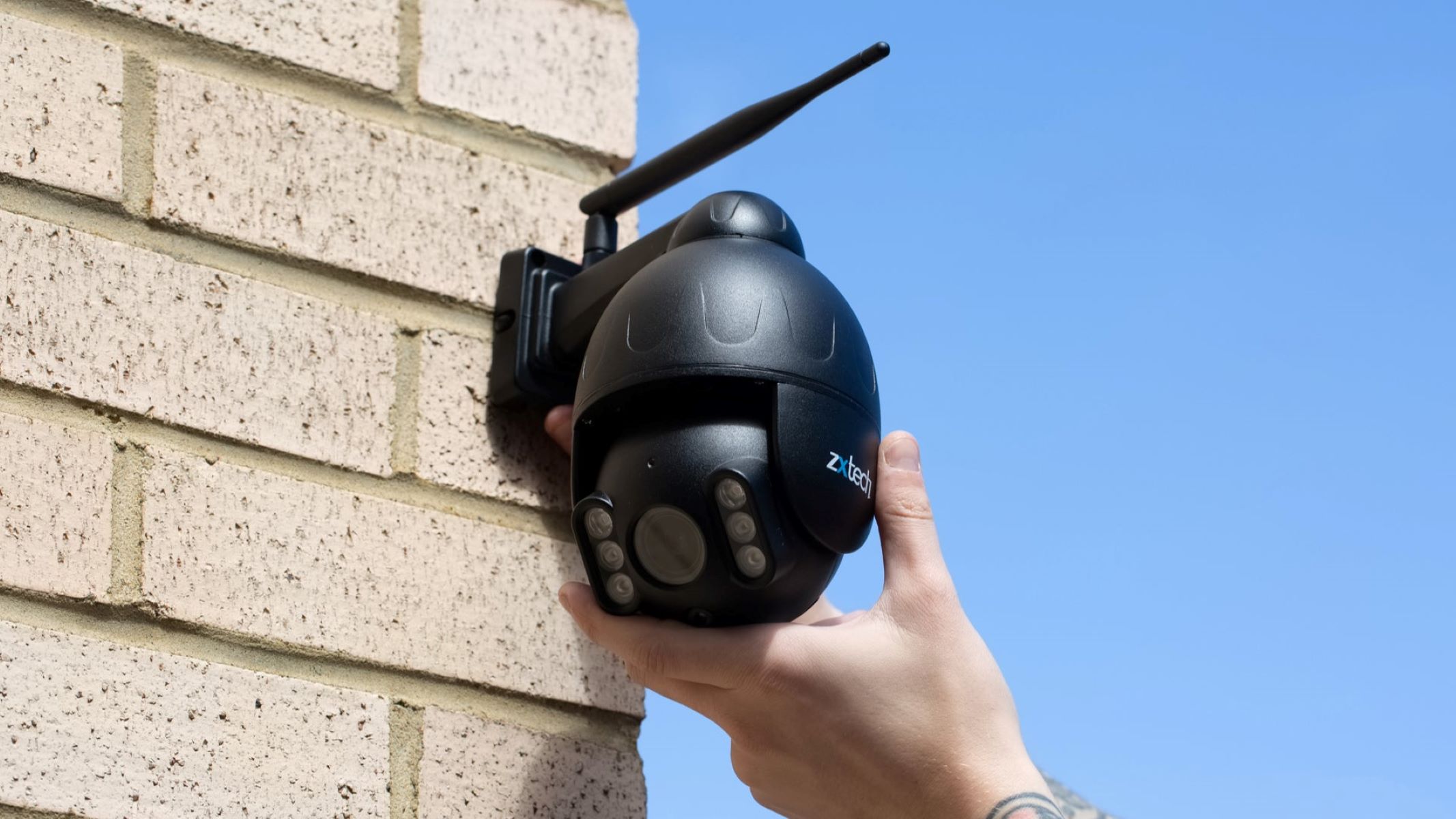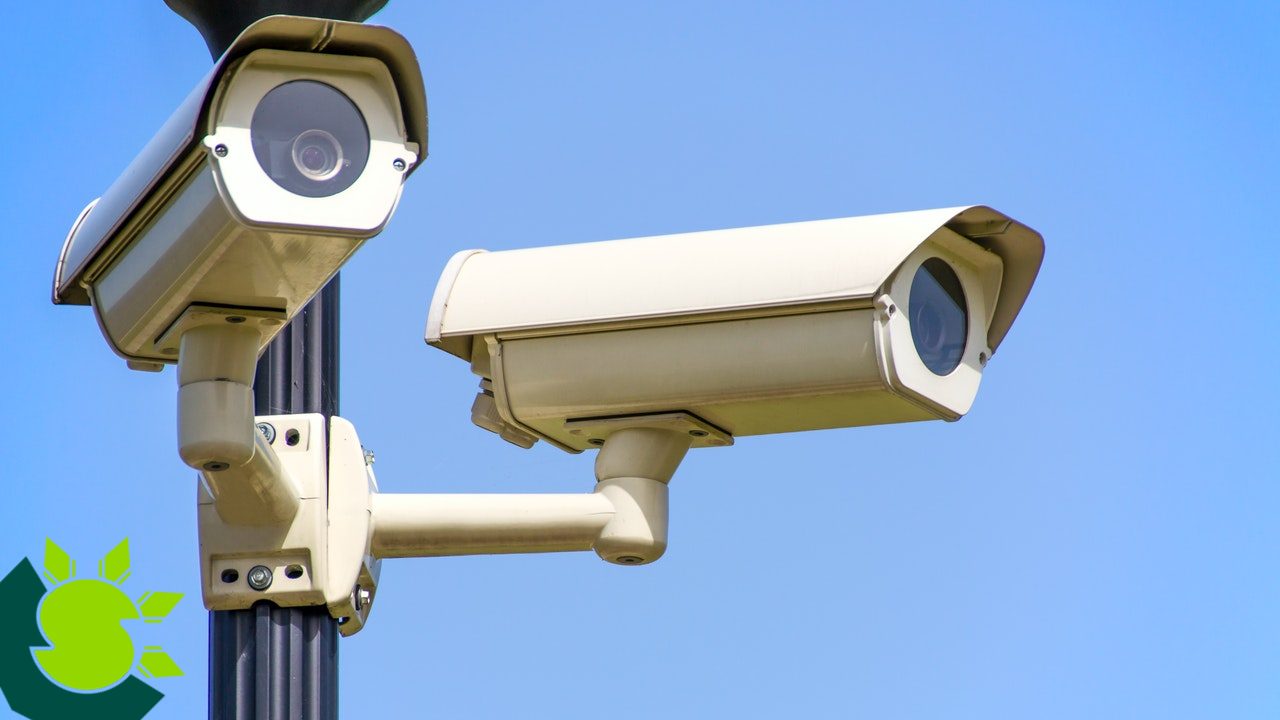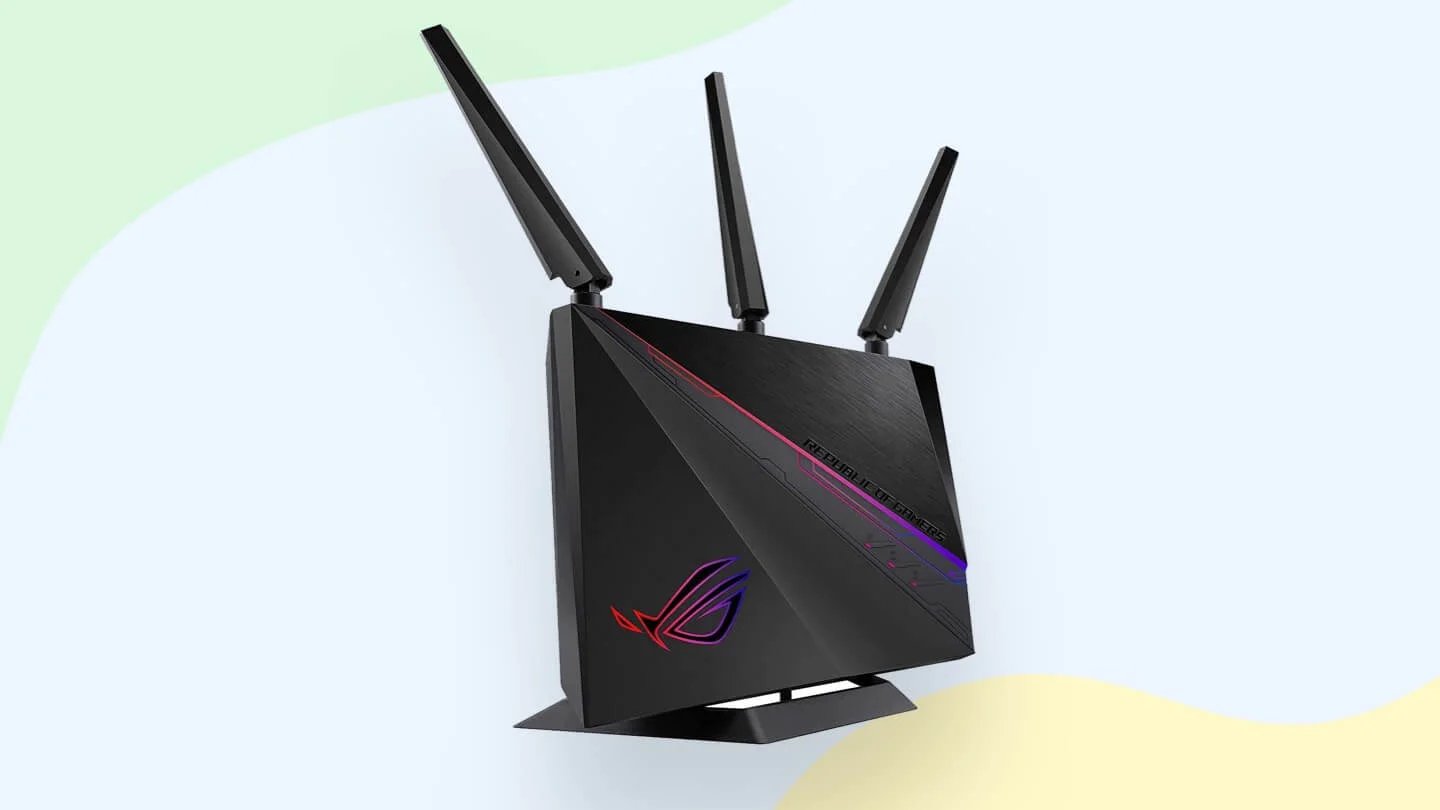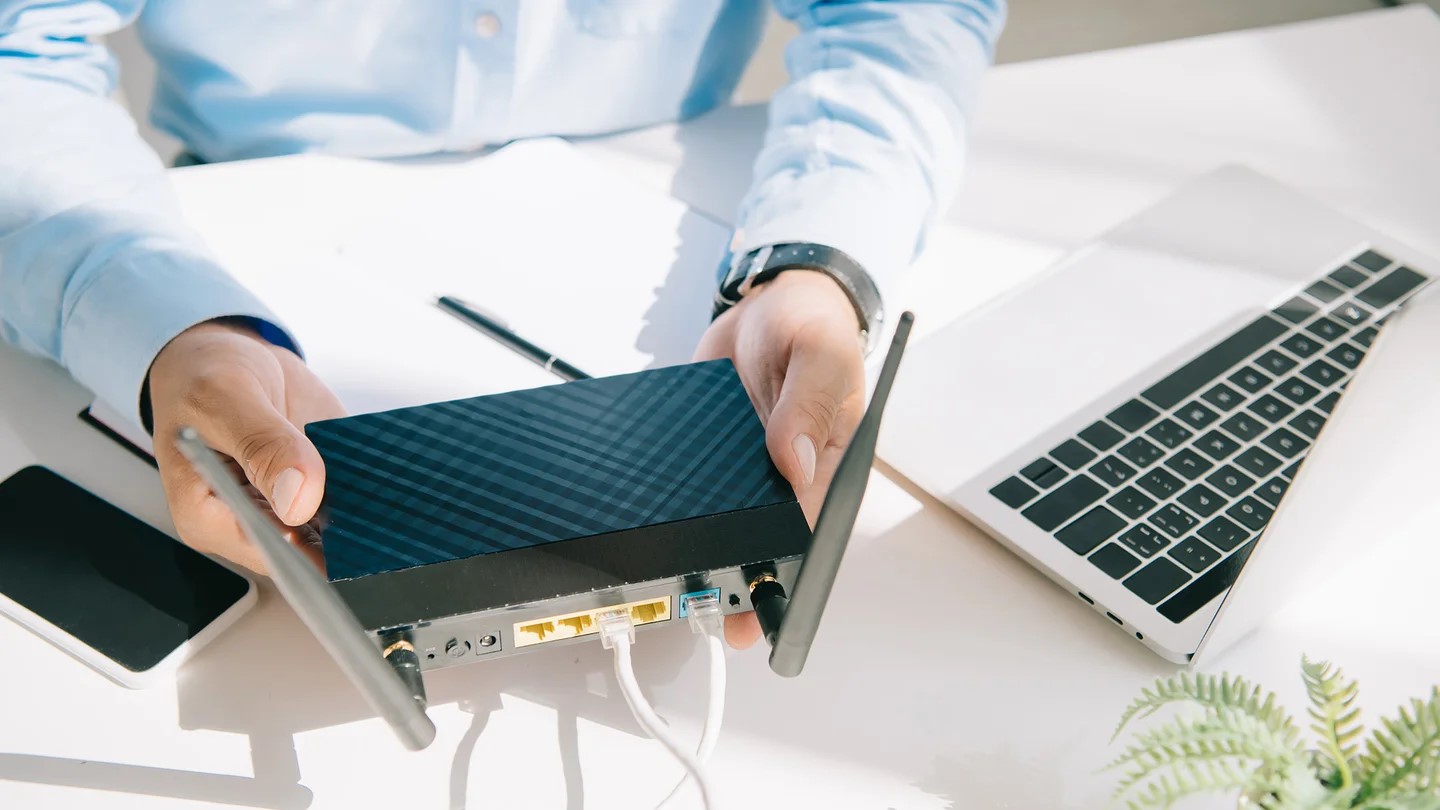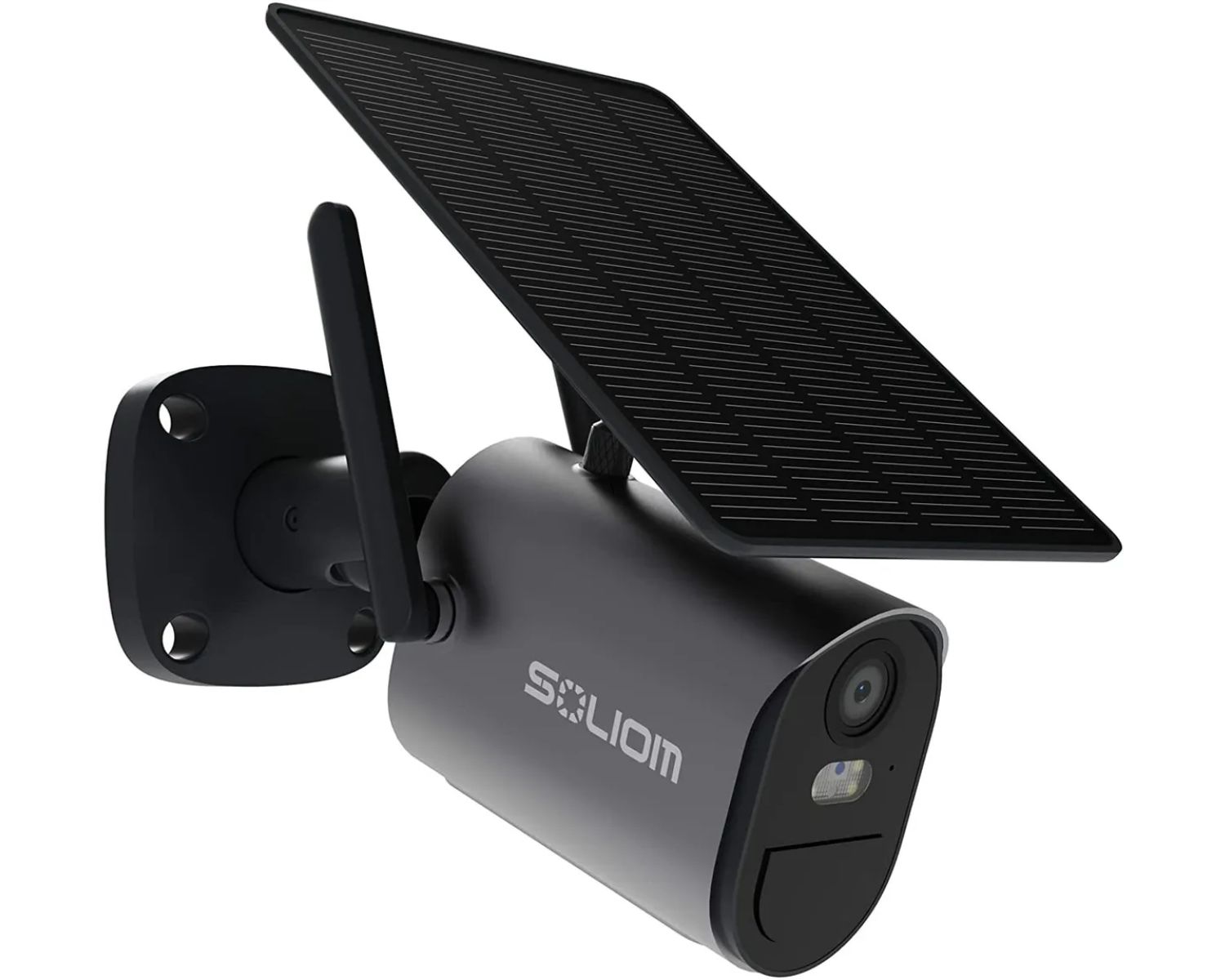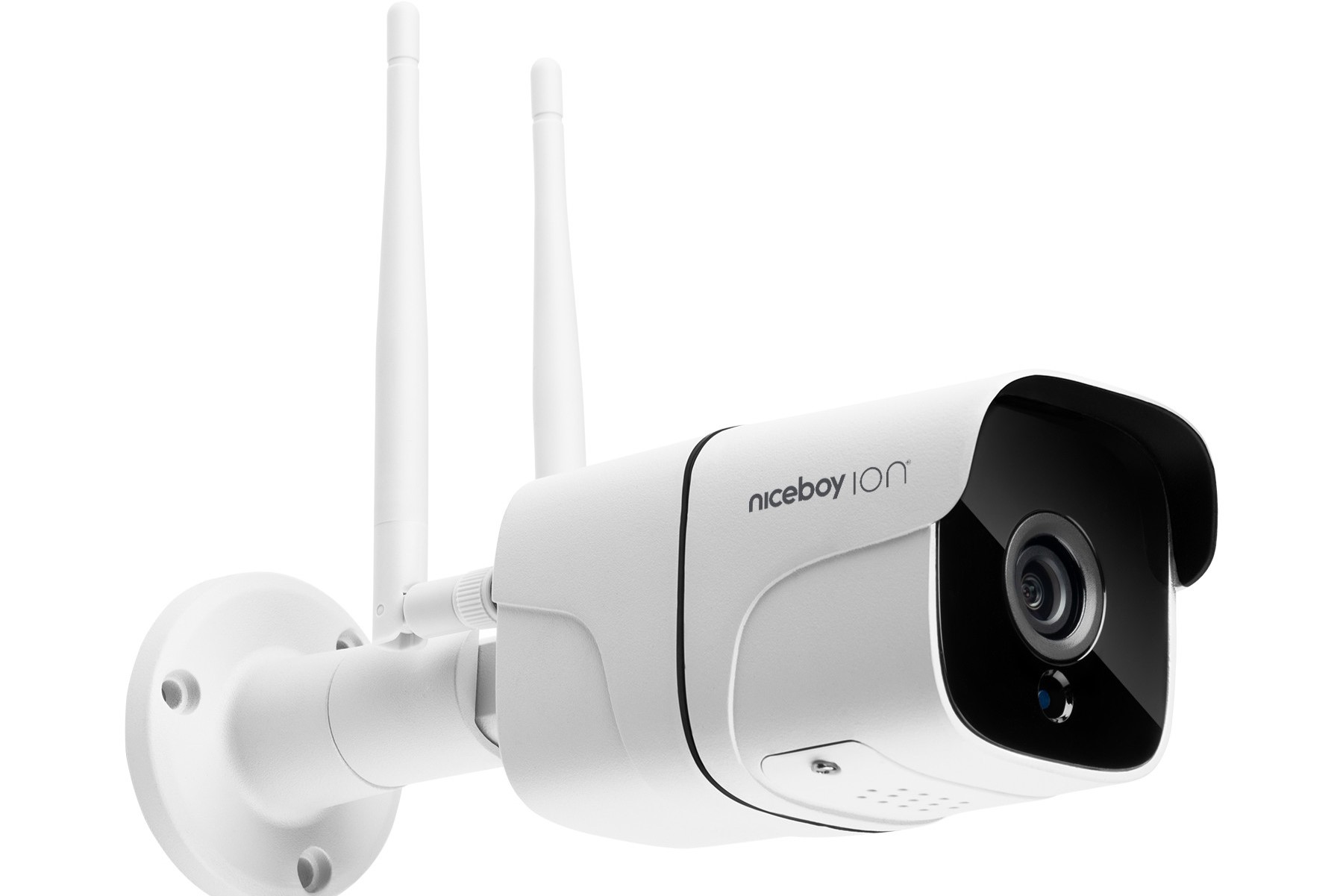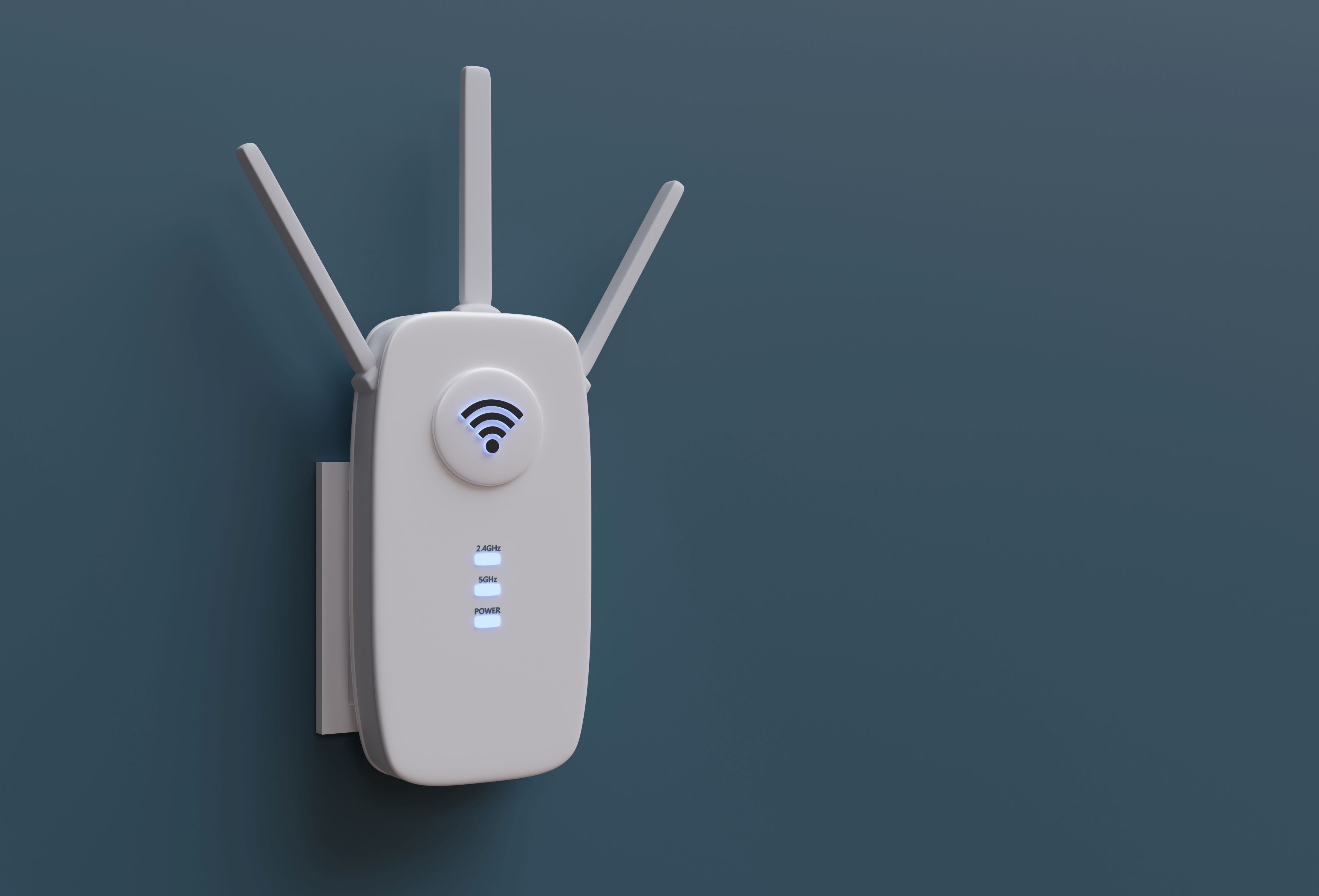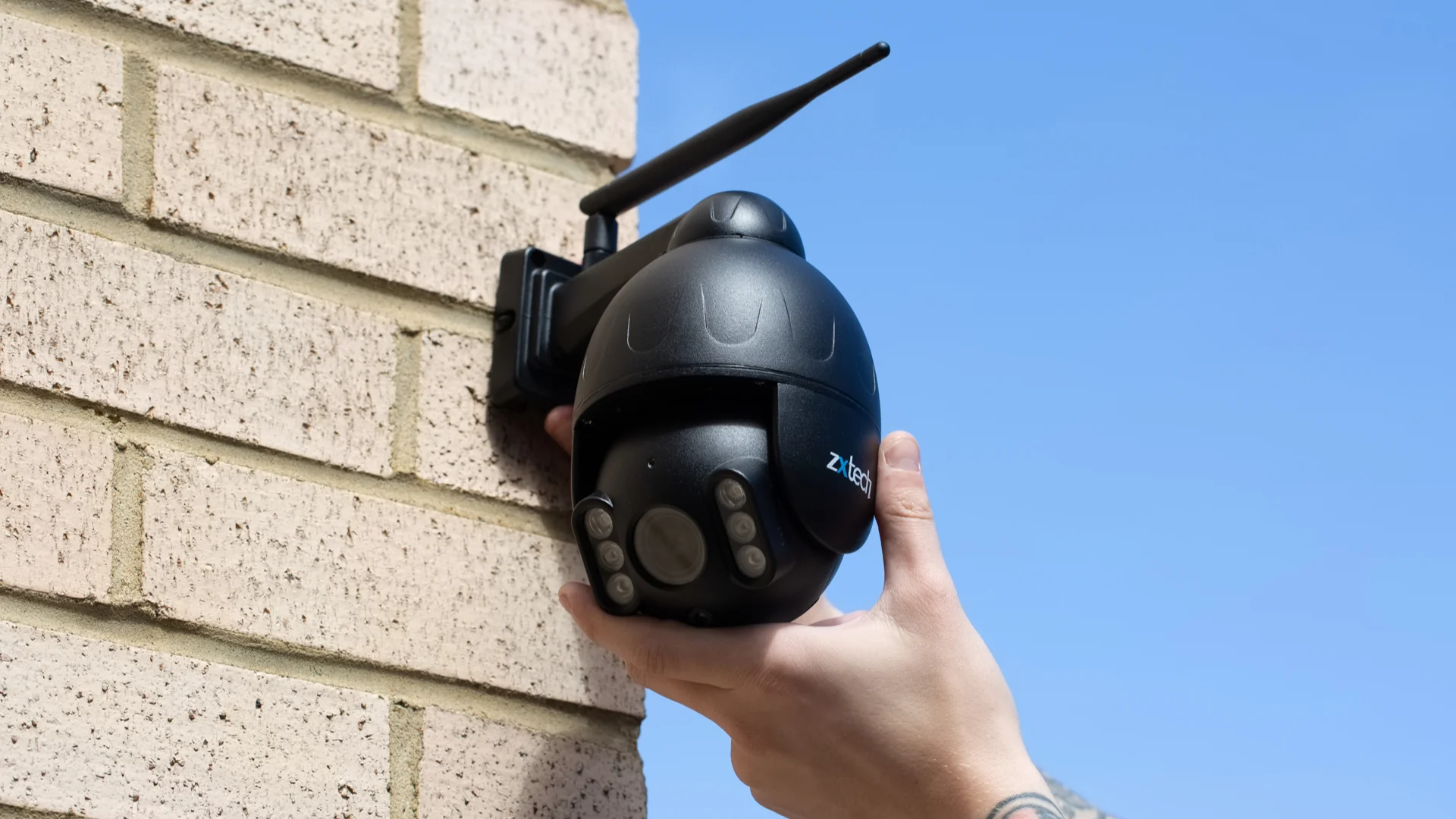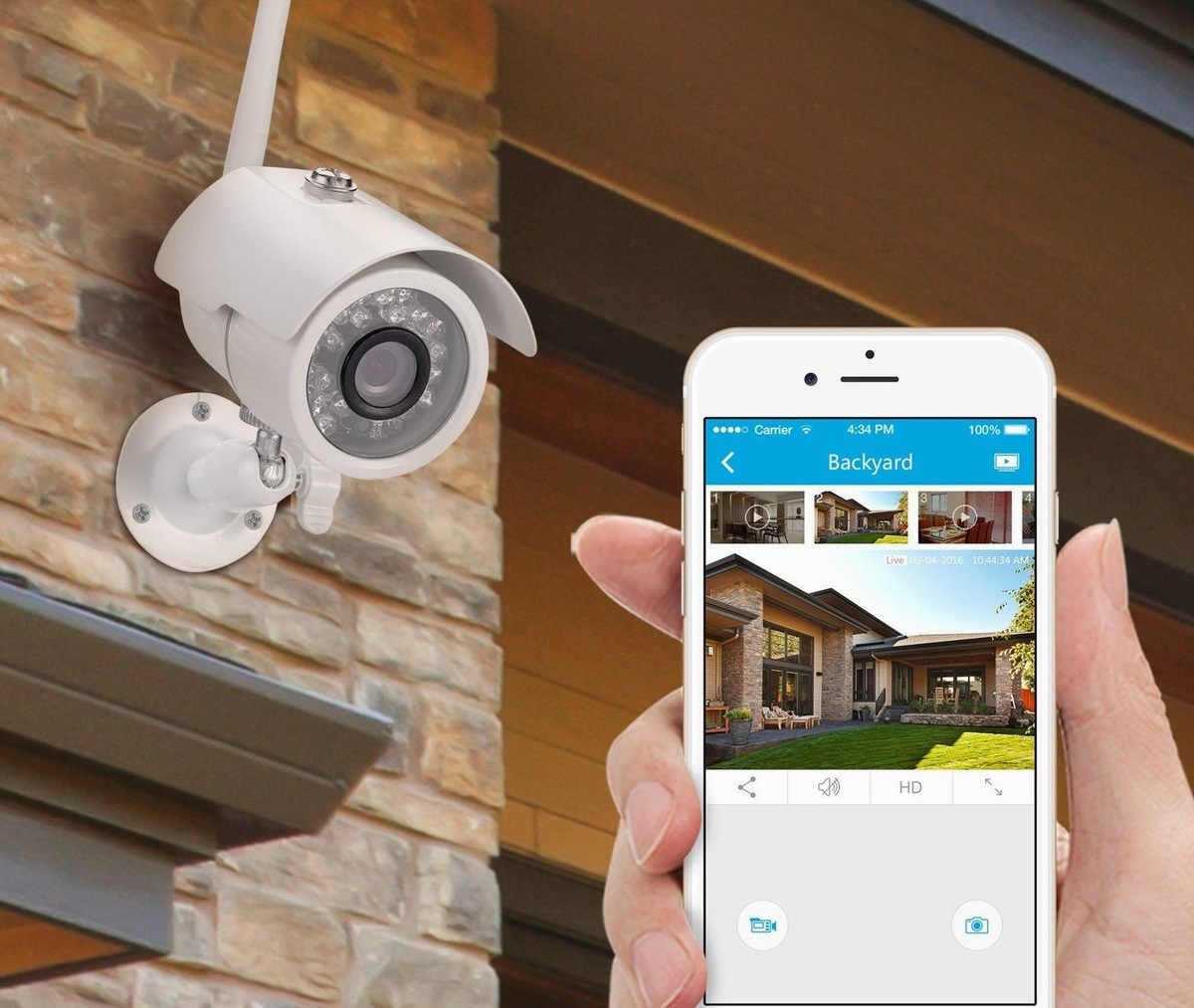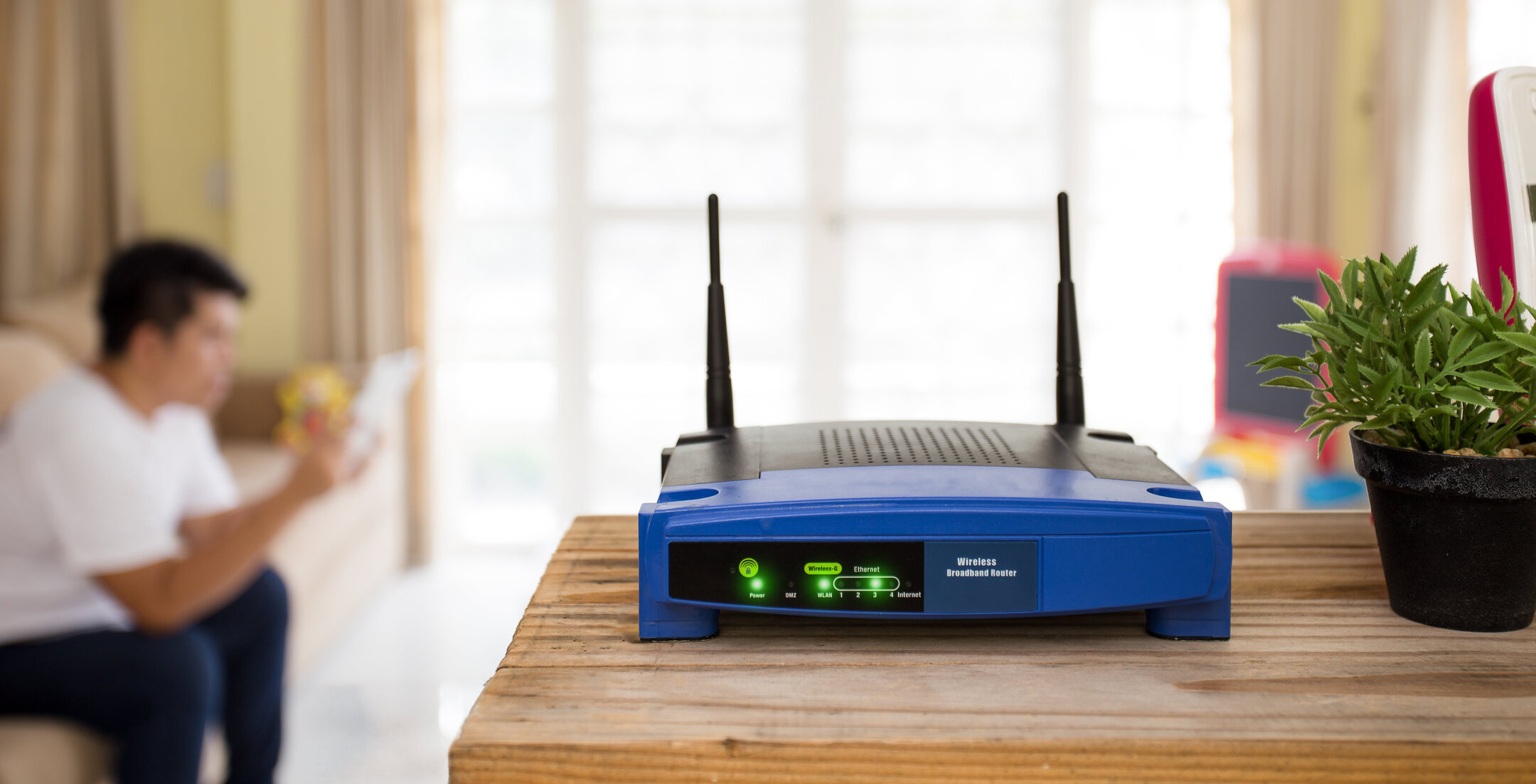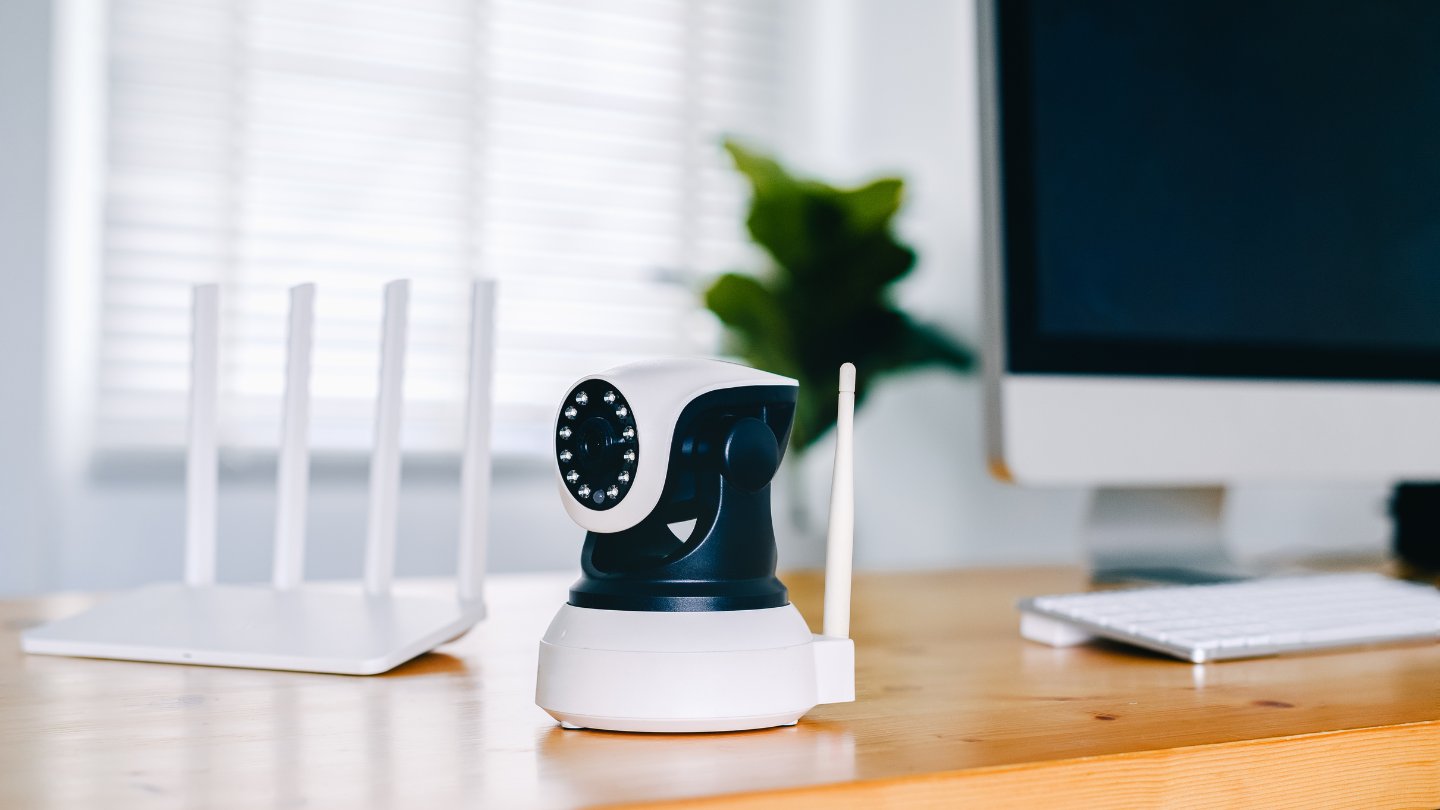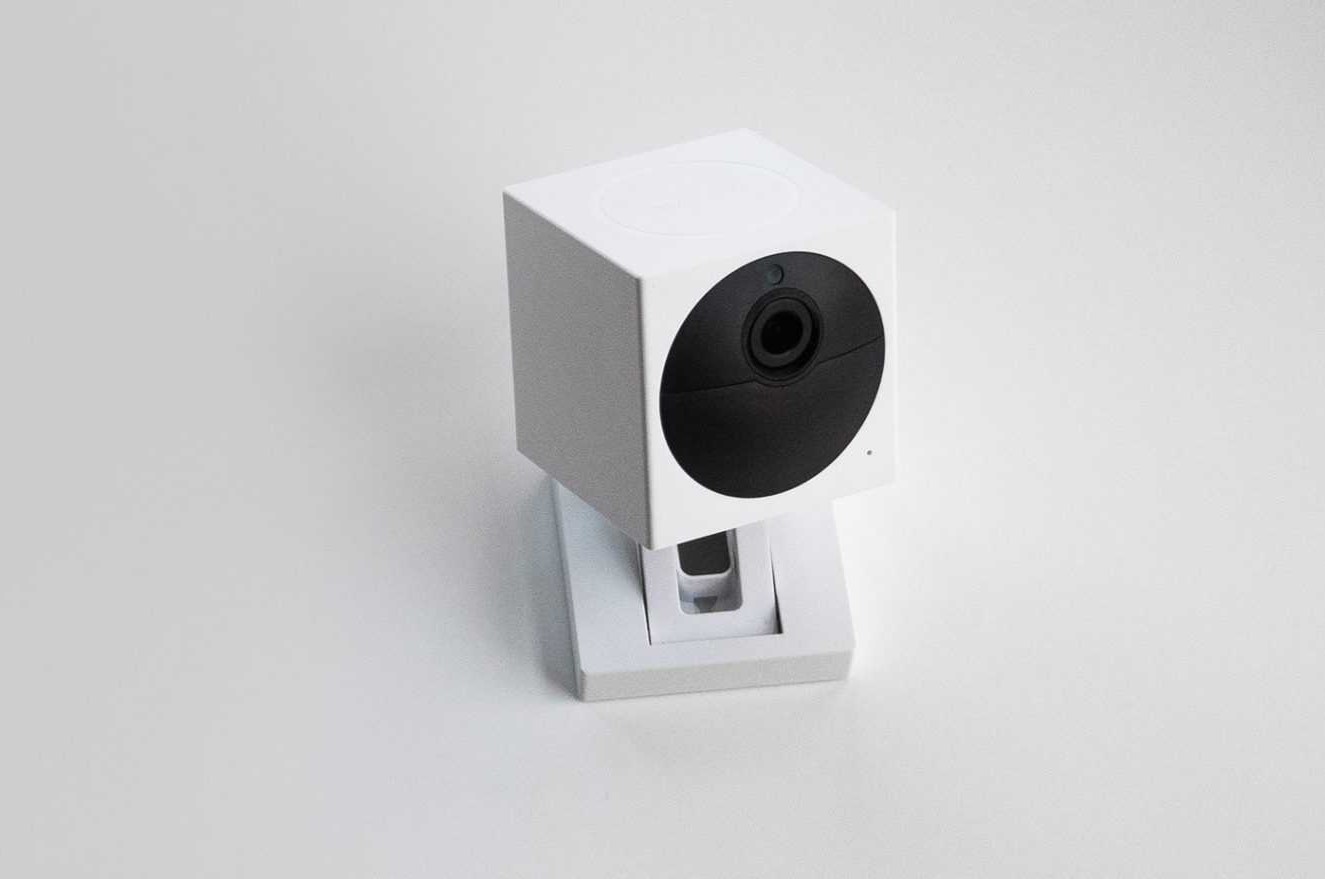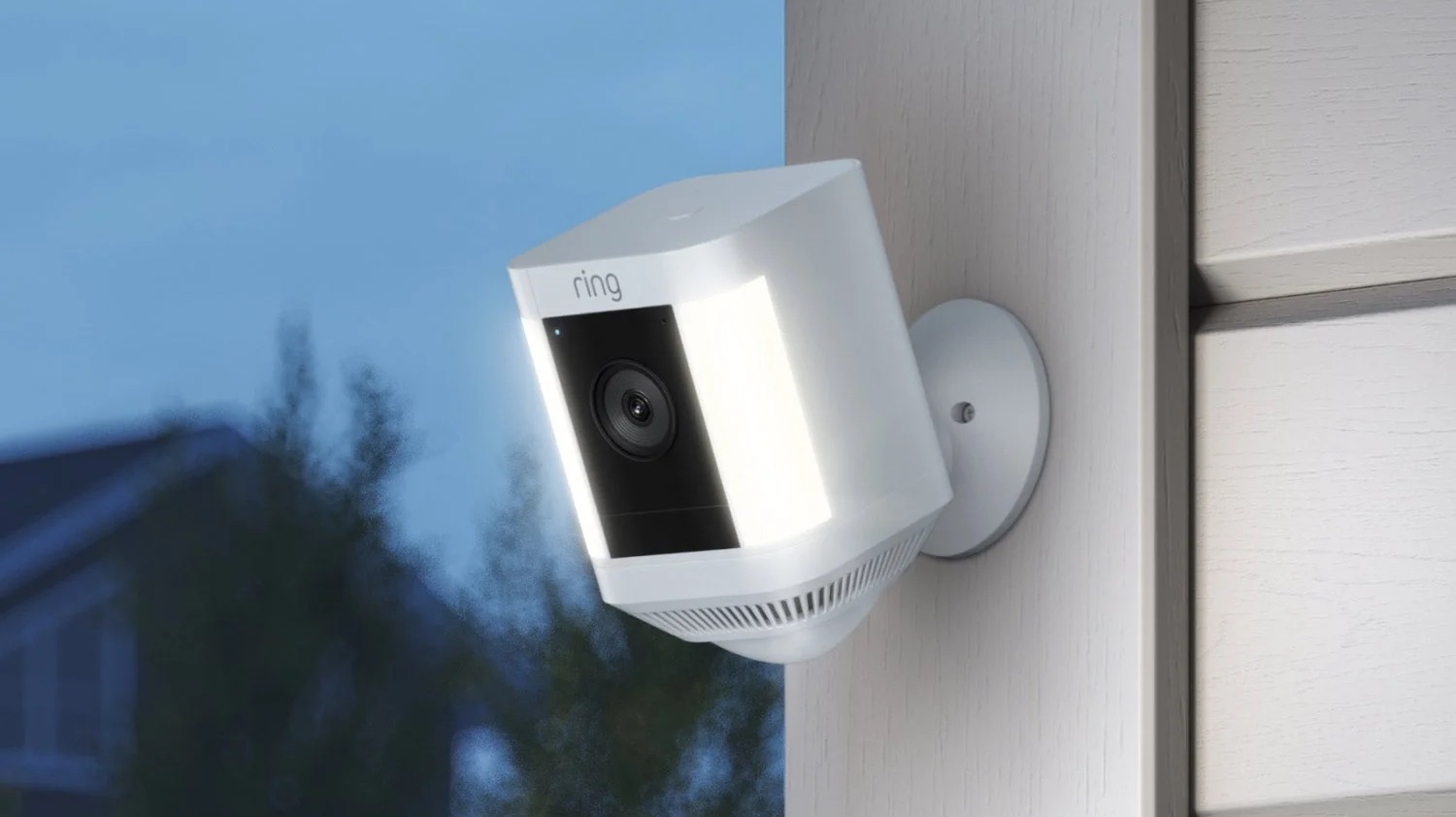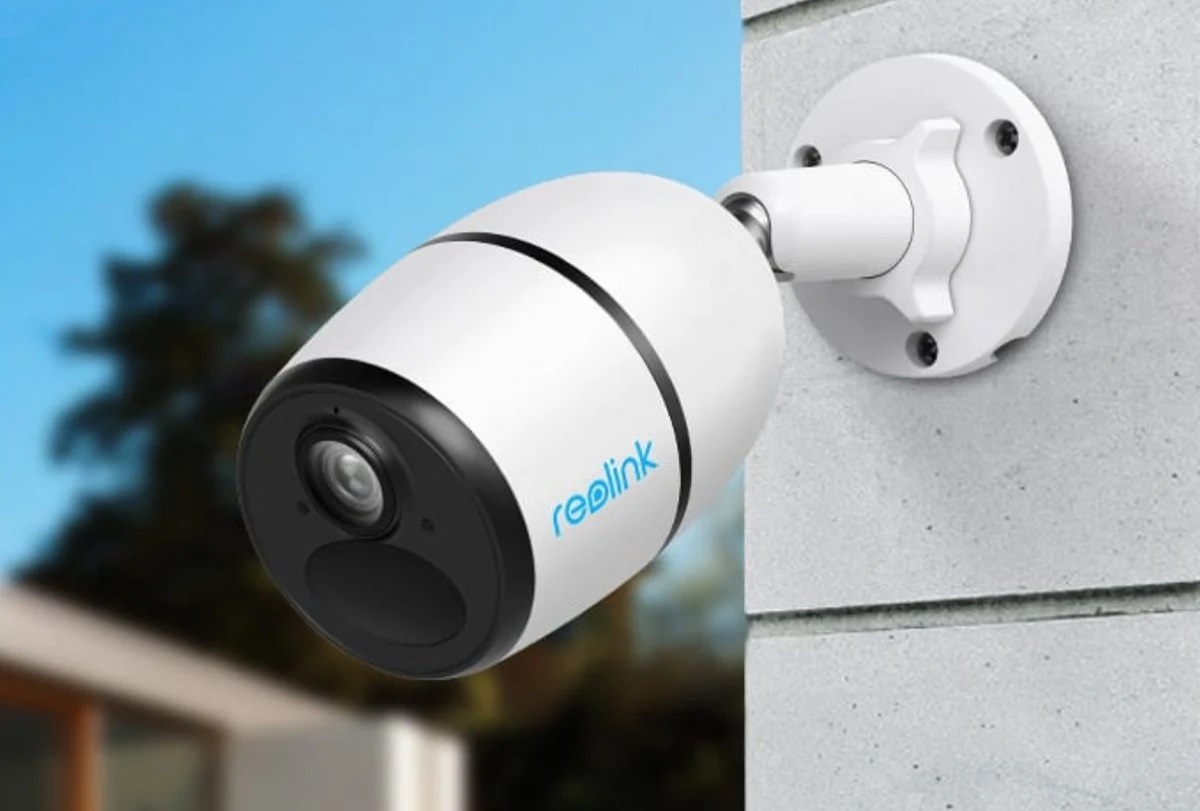Home>Home Security and Surveillance>How To Have An Outdoor Camera With Long-Range Wi-Fi In Trees
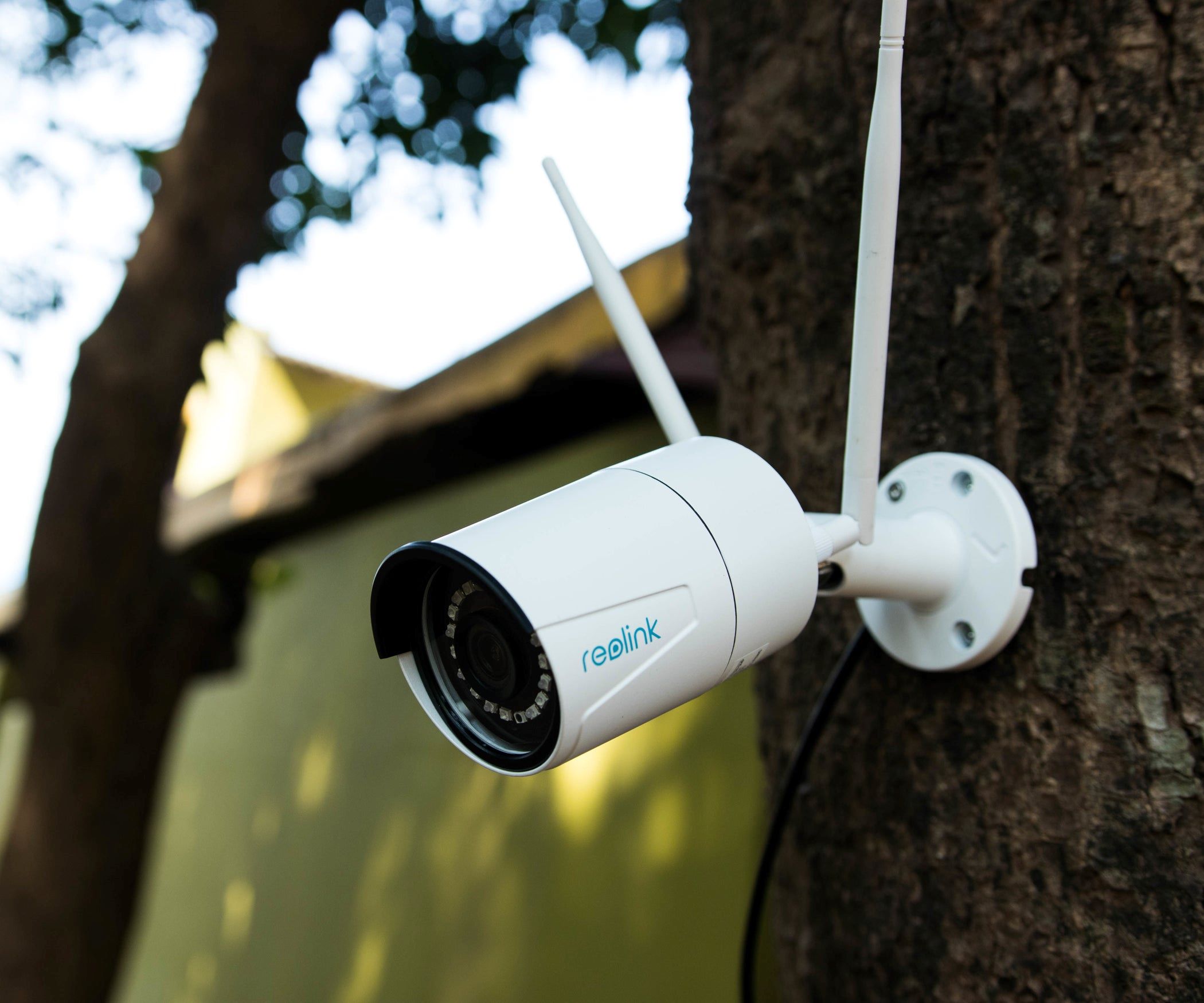

Home Security and Surveillance
How To Have An Outdoor Camera With Long-Range Wi-Fi In Trees
Modified: March 6, 2024
Learn how to enhance your home security and surveillance with a long-range Wi-Fi outdoor camera that can be easily installed in trees. Safeguard your property with this innovative solution.
(Many of the links in this article redirect to a specific reviewed product. Your purchase of these products through affiliate links helps to generate commission for Storables.com, at no extra cost. Learn more)
Introduction
Welcome to the world of home security and surveillance, where advancements in technology have made it easier than ever to protect your property and loved ones. One crucial aspect of a comprehensive security system is outdoor cameras, which not only act as a deterrent to potential intruders but also provide valuable evidence in case of any incidents. However, installing outdoor cameras in trees can present some challenges, particularly when it comes to achieving long-range Wi-Fi connectivity.
Having a camera mounted high up in a tree offers numerous benefits. It provides an elevated vantage point, helping to capture a wider field of view and minimizing the risk of tampering. Additionally, a camera concealed in a tree can blend seamlessly into the natural surroundings, making it less visible and increasing its effectiveness in surveillance.
But how can we ensure that these outdoor cameras in trees have a reliable and stable Wi-Fi connection over a long distance? In this article, we will explore the factors to consider before installing an outdoor camera in trees, as well as how to select the right camera and optimize its Wi-Fi connectivity in a long-range setting.
With a little planning and a few technical considerations, you can enhance the security of your property with an outdoor camera in trees that offers long-range Wi-Fi connectivity.
Key Takeaways:
- When installing outdoor cameras in trees, prioritize long-range Wi-Fi capable models with weatherproofing, high resolution, and night vision. Assess Wi-Fi signal strength and consider using extenders or upgrading antennas for optimal connectivity.
- To maintain outdoor cameras in trees, conduct regular inspections, cleanings, and firmware updates. Monitor battery life for battery-powered cameras, address Wi-Fi signal interference, and keep camera access secure for reliable surveillance.
Read more: How To Change Wi-Fi On Blink Outdoor Camera
Understanding the Need for Long-Range Wi-Fi in Trees
When it comes to installing outdoor cameras in trees, the distance between the camera and your home’s Wi-Fi router can be a significant challenge. While most modern routers have decent range, they may struggle to provide a stable and reliable signal to a camera mounted in a tree several yards away.
Long-range Wi-Fi connectivity is crucial for outdoor cameras in trees to ensure that they can transmit data back to your home security system or cloud storage. Without a strong and consistent Wi-Fi connection, the camera may experience lag, dropouts, or be incapable of capturing and transmitting footage properly.
One of the main reasons for using long-range Wi-Fi connectivity in trees is to eliminate the need for cumbersome and unsightly ethernet cables. Depending on the location of the tree and the distance from your home, running an ethernet cable might be impractical or even impossible. Long-range Wi-Fi offers a wireless alternative that simplifies installation and makes the camera less conspicuous.
Moreover, long-range Wi-Fi in trees enables you to monitor areas that may be challenging to reach with traditional surveillance methods. Whether it’s a large backyard, a sprawling property, or hard-to-reach corners, a camera in a tree with reliable Wi-Fi connectivity ensures that no blind spots are left vulnerable to potential threats.
Additionally, long-range Wi-Fi in trees allows for better flexibility in camera placement. You can strategically position the camera at an optimal height for surveillance, capturing a wide viewing angle while remaining inconspicuous.
To optimize long-range Wi-Fi connectivity in trees, it’s important to understand and address the potential obstacles that may hinder the signal strength. Factors such as the presence of obstacles like buildings, walls, or thick foliage, as well as interference from other devices, can impact the stability and range of the Wi-Fi signal.
In the following sections, we’ll explore the factors you need to consider before installing an outdoor camera in trees and the steps you can take to achieve reliable and long-range Wi-Fi connectivity.
Factors to Consider Before Installing an Outdoor Camera in Trees
Installing an outdoor camera in trees requires careful consideration of several factors to ensure optimal performance and effectiveness. Before you begin, take the time to assess the following key aspects:
- Camera Specifications: Start by selecting a camera model that is specifically designed for outdoor use. Look for features such as weatherproofing, durability, and night vision capabilities. Additionally, check the camera’s Wi-Fi range specification to ensure it can support the distance between the tree and your home.
- Wi-Fi Signal Strength: Assess the Wi-Fi signal strength in the area where the camera will be mounted. Use a smartphone or a Wi-Fi signal analyzer tool to determine if the signal is reliable enough to stream video footage from that location. Observe any dead zones or weak signal areas.
- Tree Stability: Evaluate the stability and health of the tree you plan to mount the camera on. Ensure that the branches can bear the weight of the camera and withstand wind and other environmental factors. A secure and sturdy tree is essential to prevent the camera from falling or losing its angle over time.
- Power Supply: Consider the availability of a power source near the tree or explore alternative power options like solar panels or battery-operated cameras. Ensure that the power supply is convenient and reliable to avoid any disruptions in camera functionality.
- Camera Visibility: A hidden camera can provide better surveillance, but it’s important to also consider the camera’s visibility to deter potential intruders. Assess the angle of view, the camera’s field of vision, and how well it blends with the surrounding environment while still maintaining visibility for surveillance purposes.
- Wi-Fi Interference: Identify potential sources of Wi-Fi interference that may hinder the camera’s ability to maintain a stable connection. This can include wireless devices, other routers, or thick foliage that may obstruct the signal. Take steps to minimize these interferences for optimal Wi-Fi connectivity.
- Accessibility: Consider the accessibility of the camera for routine maintenance, such as cleaning, adjustments, and firmware updates. Ensure that it can be easily reached without compromising safety or requiring specialized equipment.
By carefully considering these factors before installing an outdoor camera in trees, you can ensure that you select the right camera model, find the optimal location, and overcome any potential challenges for reliable and effective surveillance.
Selecting the Right Outdoor Camera for Long-Range Wi-Fi
Choosing the right outdoor camera for long-range Wi-Fi connectivity is essential to ensure reliable surveillance and effective monitoring. Consider the following factors when selecting your camera:
- Wi-Fi Range: Look for a camera model that specifically mentions long-range Wi-Fi capability in its specifications. Check the range provided by the camera’s antenna or signal booster to ensure it covers the distance required for your installation.
- Antenna Type: Opt for cameras with detachable antennas or cameras that offer the option to connect an external high-gain antenna. This allows you to upgrade the antenna for better long-range signal transmission if needed.
- Resolution and Image Quality: Ensure that the camera offers a high-resolution image quality, preferably 1080p or higher. The clearer the footage, the better the chances of accurately identifying individuals or incidents on camera.
- Night Vision: Look for cameras with excellent night vision capabilities, enabling them to record clear footage even in low-light or complete darkness. Infrared (IR) LEDs or other advanced night vision technologies can significantly enhance visibility during nighttime surveillance.
- Weatherproofing: Outdoor cameras should be specifically designed to withstand the elements. Look for cameras with an IP65 or higher weatherproof rating to ensure they are protected against dust, rain, snow, and extreme temperatures.
- Mobile App and Connectivity: Check if the camera comes with a dedicated mobile app that allows you to remotely access and control the camera. A user-friendly app with robust connectivity options ensures that you can monitor your property from anywhere using your smartphone or tablet.
- Storage Options: Consider whether the camera offers local storage options like an SD card slot or if it relies on cloud storage. Evaluate the advantages and limitations of each storage option and choose the one that best fits your needs and preferences.
- Battery or Power Source: Determine whether you prefer a camera that is battery-powered or one that requires a constant power source. Battery-powered cameras offer flexibility in terms of placement but require regular battery replacement or recharging.
Before purchasing an outdoor camera for long-range Wi-Fi connectivity, thoroughly research different models, read customer reviews, and compare features to find the camera that best suits your specific requirements.
Choosing the Perfect Location for Mounting the Camera in Trees
When it comes to mounting an outdoor camera in trees, the location plays a vital role in its effectiveness and coverage. Here are some factors to consider when selecting the perfect spot:
- Field of View: Assess the area you want the camera to cover and choose a location that provides the widest field of view. An elevated position in the tree will give the camera a better vantage point and allow it to capture a broader area.
- Camera Angle: Position the camera so that it is angled downwards to capture the desired area of surveillance. Adjust the angle to cover the entry points, important pathways, or any vulnerable spots that need monitoring.
- Hidden but Visible: Strive for a balance between hiding the camera in the tree foliage to make it less noticeable and ensuring that it remains visible enough to act as a deterrent. Consider the density of the tree branches and foliage to find the right balance for your specific situation.
- Accessibility: Choose a location that allows for easy access to the camera for maintenance and adjustments. Ensure that you can reach it safely without the need for specialized equipment or risking damage to the tree or camera.
- Obstructions: Take note of any potential obstructions that may hinder the camera’s view, such as branches, leaves, or other objects. Trim branches if necessary to clear the camera’s line of sight and ensure unobstructed surveillance.
- Wi-Fi Connectivity: Remember that the camera needs a reliable Wi-Fi signal to transmit data. If there are obstacles blocking the Wi-Fi signal between the camera and your home, consider using Wi-Fi extenders or repeaters to boost the signal strength.
- Camera Distance: Keep in mind the distance between the camera and your home’s Wi-Fi router. If it exceeds the camera’s specified Wi-Fi range, consider using a signal booster or a wireless bridge system to extend the range and maintain a stable connection.
- Neighborhood Regulations: Check local regulations or homeowners’ association rules regarding the placement of outdoor cameras. Ensure that your chosen location complies with any restrictions and does not invade your neighbors’ privacy.
Choose a location that optimizes surveillance coverage while considering factors like accessibility, hidden visibility, and Wi-Fi connectivity. Experiment with different positions until you find the perfect spot that balances effective monitoring with discretion.
When setting up an outdoor camera with long-range Wi-Fi in trees, make sure to use a weatherproof and durable camera housing. This will protect the camera from the elements and ensure a reliable connection.
Read more: How To Hook Up A Wi-Fi Outdoor Camera
Setting Up Long-Range Wi-Fi Connectivity for the Outdoor Camera
Setting up long-range Wi-Fi connectivity for your outdoor camera in trees involves taking specific steps to ensure a reliable and stable connection. Follow these guidelines to optimize your camera’s Wi-Fi performance:
- Assess Wi-Fi Signal Strength: Determine the strength of your Wi-Fi signal in the area where the camera will be mounted. Check if there are any dead spots or weak signal areas that could affect the camera’s ability to transmit data back to your home network.
- Position Your Router: Position your Wi-Fi router in a central location, preferably near a window facing the camera’s location. This helps reduce the distance between the router and the camera, improving signal strength and stability.
- Use a Wi-Fi Extender or Repeater: If the camera’s location is beyond the range of your router, consider using a Wi-Fi extender or repeater. These devices amplify the Wi-Fi signal and extend its coverage, allowing the camera to maintain a reliable connection.
- Upgrade to a High-Gain Antenna: Upgrading your router’s antenna to a high-gain antenna can significantly boost its signal strength and range. This helps overcome obstacles and increase the reach of your Wi-Fi network, reaching the camera in the tree more effectively.
- Consider a Wireless Bridge: If your router’s signal strength is inadequate for long-range connectivity, you can use a wireless bridge system. A wireless bridge connects to your router and wirelessly transmits the network signal to the camera, bridging the gap between the two points.
- Optimize Wi-Fi Channel: Check for other Wi-Fi networks in the vicinity that may cause interference. Select a less crowded Wi-Fi channel to reduce interference and improve the camera’s connectivity and performance.
- Inspect the Camera’s Antenna: Ensure that the camera’s antenna is properly connected and positioned for optimal signal reception. Adjust the antenna’s angle or consider upgrading to a higher-gain antenna, if possible, to enhance long-range connectivity.
- Secure Your Wi-Fi Network: Protect your network by enabling encryption (WPA2) and choosing a strong, unique password for your Wi-Fi. This ensures that unauthorized users cannot access your network and potentially tamper with the camera or compromise your security.
- Regularly Test Connectivity: Periodically check the camera’s connectivity by viewing the live feed or reviewing recorded footage. This allows you to identify any potential Wi-Fi connectivity issues and promptly address them.
By following these steps and ensuring a strong and stable Wi-Fi connection, you can optimize the performance of your outdoor camera in trees and have peace of mind knowing that your surveillance system is operating flawlessly.
Ensuring Security and Protection for the Outdoor Camera in Trees
Securing and protecting your outdoor camera in trees is essential to prevent tampering, theft, or damage. Consider the following measures to ensure the safety and longevity of your camera:
- Choose a Discreet Mounting Method: Select a mounting method that is discreet and makes it difficult for intruders to notice or tamper with the camera. Conceal the cables and ensure that the camera is securely attached to the tree branches or trunk.
- Use Tamper-Proof Mounting Hardware: Invest in tamper-proof mounting hardware, such as screws or brackets, to secure the camera to the tree. These specialized fixtures require specific tools or techniques to remove, deterring potential thieves or vandals.
- Add Additional Physical Security Measures: Consider adding extra layers of physical security, such as metal grilles or cages, around the camera. These barriers protect the camera from direct physical access while still allowing the lens to capture an unobstructed view.
- Utilize Remote Access Control: Opt for cameras that offer remote access control features. This allows you to monitor, control, and adjust camera settings from your mobile device or computer, reducing the need for physical interaction or exposure to the camera.
- Enable Motion Detection and Alerts: Configure the camera’s motion detection capabilities and set up automatic alerts to notify you whenever motion is detected near the camera. This helps alert you to potential threats and allows you to take appropriate action promptly.
- Install Security Lighting: Install security lighting in the camera’s vicinity to enhance visibility and deter potential intruders. Motion-activated lights can be effective in illuminating the area and capturing clear footage in low-light conditions.
- Regularly Inspect and Clean the Camera: Conduct routine inspections of the camera to check for any signs of damage, wear, or tampering. Clean the lens periodically to ensure clear video quality and remove any dust or debris that may accumulate over time.
- Protect from Weather Elements: Ensure that the camera’s housing is weatherproof and designed to withstand the elements. Regularly inspect seals and covers to make sure they remain intact, preventing moisture or dust from damaging the camera.
- Secure Wi-Fi Network: Protect your Wi-Fi network with strong encryption and a unique password. Regularly update the router’s firmware to address security vulnerabilities and prevent unauthorized access to your camera’s video feed or settings.
By implementing these security measures, you can safeguard your outdoor camera in trees and ensure that it remains functional, reliable, and protected from potential threats.
Maintenance Tips for Long-Range Wi-Fi Outdoor Cameras in Trees
Maintaining your long-range Wi-Fi outdoor camera in trees is crucial to ensure its optimal performance and longevity. Follow these maintenance tips to keep your camera operating smoothly:
- Regularly Inspect and Clean the Camera: Conduct routine inspections of the camera to check for any signs of damage, loose connections, or wear. Clean the lens and housing regularly to remove dirt, dust, and debris that may affect image clarity.
- Monitor Battery Life (If Applicable): If your camera is battery-powered, keep an eye on the battery life and recharge or replace the batteries as needed. Maintaining a fully charged battery ensures uninterrupted surveillance.
- Check Wi-Fi Signal Strength: Periodically verify the strength and stability of the camera’s Wi-Fi connection. Use a Wi-Fi signal analyzer app to check for any interference or weak spots that may affect the camera’s performance.
- Update Firmware: Regularly check for firmware updates provided by the camera manufacturer. Updating the camera’s firmware ensures that it has the latest features, bug fixes, and security improvements.
- Secure Camera Access: Protect the camera’s access by changing the default username and password. Use strong, unique credentials to prevent unauthorized access and ensure the privacy of your camera’s feed.
- Review Footage: Take the time to review the camera’s recorded footage periodically. This allows you to assess its performance, identify any issues, and ensure that it is capturing the desired areas effectively.
- Trim Foliage and Branches: Regularly trim any foliage or branches that may obstruct the camera’s view or interfere with the Wi-Fi signal. Clearing the surrounding area ensures unobstructed surveillance and better connectivity.
- Protect Against Power Surges: Consider using surge protectors or surge suppressors to safeguard the camera against power surges or voltage fluctuations. This helps prevent damage to the camera’s electrical components.
- Monitor for Pests: Keep an eye out for any signs of pests or insects that may be attracted to or affect the camera. Address any infestation promptly to prevent damage or interference with the camera’s functionality.
- Keep Documentation and Warranty: Keep all the documentation, warranties, and purchase information related to the camera in a safe place. This ensures that you have access to support or warranty services if needed.
By following these maintenance tips, you can keep your long-range Wi-Fi outdoor camera in trees in optimal condition, ensuring uninterrupted surveillance and reliable performance.
Conclusion
Installing an outdoor camera in trees with long-range Wi-Fi connectivity is a smart way to enhance your home security and surveillance system. It allows you to monitor challenging areas, maintain discreet surveillance, and capture clear footage from a higher vantage point. However, it’s important to consider various factors, such as camera selection, Wi-Fi signal strength, and optimal location, to ensure effective performance.
When choosing an outdoor camera, prioritize models that offer long-range Wi-Fi capabilities, weatherproofing, high resolution, and night vision. Assess the Wi-Fi signal strength and consider utilizing Wi-Fi extenders, upgrading antennas, or implementing wireless bridge systems to improve connectivity.
The location of the camera in the tree is crucial for optimal surveillance. Factors such as field of view, camera angle, visibility, and accessibility should be considered when mounting the camera. Ensure the camera is securely attached and protected from tampering or theft.
To maintain long-range Wi-Fi outdoor cameras, regular inspections, cleaning, and firmware updates are essential. Monitor battery life for battery-powered cameras and address any Wi-Fi signal interference or weak spots. Keep the camera access secure and review footage periodically to ensure functionality and performance.
By following these guidelines and implementing appropriate maintenance measures, you can enjoy reliable surveillance, enhanced security, and peace of mind knowing that your outdoor camera in trees is providing effective protection for your property and loved ones.
Frequently Asked Questions about How To Have An Outdoor Camera With Long-Range Wi-Fi In Trees
Was this page helpful?
At Storables.com, we guarantee accurate and reliable information. Our content, validated by Expert Board Contributors, is crafted following stringent Editorial Policies. We're committed to providing you with well-researched, expert-backed insights for all your informational needs.
